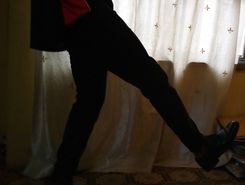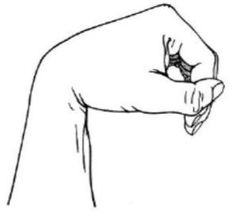Active and Passive Insufficiency
Original Editor - Innocent Abugu
Top Contributors - Innocent Abugu, Lucinda hampton, Kim Jackson and Alicia Fernandes
Introduction[edit | edit source]
The ability of a muscle to exert force diminishes as the muscle shortens. This phenomenon is known as muscle insufficiency. Muscle insufficiency is a condition in which a muscle is unable to exert its normal force and bring about movement of the part to which it is attached.[1] It can either be passive or active.
Active Insufficiency[edit | edit source]
When a muscle becomes shortened to the point that it cannot generate or maintain active tension, active insufficiency is reached. Active insufficiency occurs when a multi-joint muscle shortens over both joints simultaneously, hence, creates so much slack, that muscle tension is almost completely lost[2].
- The Rectus femoris can actively flex the hip or extend the knee individually through their full range of motion.
On the other hand, the hip cannot be actively flexed and the knee extended simultaneously through their full range of motion, because the Rectus femoris, which crosses both joints, has shortened to a degree that it becomes unable to generate a maximum muscle contraction.
- Maximal shoulder flexion cannot be achieved simultaneously with maximal elbow flexion due to the shortening of the Bicep brachii.
Passive Insufficiency[edit | edit source]
When the opposing muscle (antagonist) is stretched to a point where it can no longer lengthen and allow further movement, passive insufficiency is reached. Passive insufficiency occurs when the multi-joint muscle is lengthened to its fullest extent at both joints, but also preventing the full range of motion of each joint it crosses.[2]
- Full finger flexion cannot be achieved if wrist flexion occurs simultaneously.
- The Rectus femoris lengthens and limits motion so that knee flexion cannot be fully achieved simultaneously with hip extension.
- Maximal hip flexion and maximal knee extension are limited by the lengthening of the Hamstrings.
References[edit | edit source]
- ↑ 2. muscular insufficiency [Internet]. TheFreeDictionary.com. 2020 [cited 17 September 2020]. Available from: https://medical-dictionary.thefreedictionary.com/muscular+insufficiency
- ↑ 2.0 2.1 1. Rogers M, Rogers M. Understanding Active and Passive Insufficiency [Internet]. National Federation of Professional Trainers. 2020 [cited 17 September 2020]. Available from: https://www.nfpt.com/blog/understanding-active-and-passive-insufficiency









